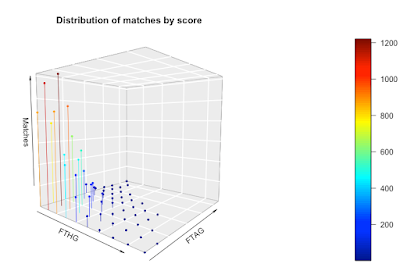How to do well on a management degree
I'm having a spring clean, I'm scanning old documents and throwing away the paper copies. It's a trip down memory lane as I'm reviewing old management essays and course notes. The management degree I did was part-time in the evenings and I did it over several years as well as doing a full-time job, so my notes built up over time and there's a lot to scan. Looking over it all, here's my guide to doing well on essays in a management master's degree program.
Why I did badly at first
I had been in the technology industry for a long time before I took management classes. I was used to coding and writing technical documentation and I'd become stuck in my ways. The thing about most technical documents is that no one reads them, and very rarely do you get feedback on your writing style. In the few years before I began the classes, I'd started to do more marketing work, and I found it challenging - for the first time, I was getting negative feedback on how I was writing, so I knew I had a problem.
My first course was accounting, which I did very well in. But of course I did well, accounting is another technical discipline. It's like coding, but with different rules and the added threat of lawsuits and jail time.
The second course I did was an HR course and we used the case study method in class. I was gung-ho for my first essay and I was convinced I was going to get a great mark for it. I got a C.
I did what every bad student does when they get a bad grade: I blamed the lecturer. Then I stopped and gave myself a talking to. I was determined to do better.
I did badly for two reasons:
- A stilted, over-technical writing style.
- I didn't understand what the lecturer wanted. The goal was to show that I had absorbed the terminology of HR and could appropriately apply it. The goal was not to solve the business problem. In my essay, I focused on solving the business problem and I didn't mention enough of the HR concepts we covered in class.
How I did well
The first order of business was fixing my writing style. I had a short period between essays, but fortunately, it was long enough to do some work. I did crash reading on how to write better in general and how to write better essays. Unashamedly, I went back to basics and read guides for undergraduates and even high school students. I talked to other students online about writing. I realized I had some grammar and style issues, but I also knew I couldn't fix them all in one go, so I focused on the worst problems first.
Next was understanding what the lecturer wanted. Once I understood that the essay was a means of checking my understanding of concepts, I had a clean way forward: buzzword bingo. Prior to beginning any essay, I made a list of all the relevant concepts we'd covered in class, and I added some that weren't covered but I'd found through reading around. My goal was to ensure that I applied every concept to the case study and make it clear I'd done so. The essays were a vehicle to show understanding of concepts.
The third step was a better essay plan. I figured out how I would apply my buzzwords to the case study and built my work into a narrative. I made sure that the logical steps made sense from one concept to another and I made sure to link ideas. Every essay has a maximum word (or page) count, so I developed a word budget for each idea, making sure the most important ideas got the most words. This also helps with a perennial student problem, spending too many words on the introduction and conclusion. The word budget idea was the biggest step forward for me, it made sure I focused my thoughts and it always led to my essays being too long. In the editing process, I chopped down the introduction and conclusion and removed extraneous words, I also cut down on the use of the passive voice, which is a real word hog.
My essay process
Buzzword bingo. Make a list of every concept you think is relevant to the case study, making sure to use the correct terminology. This list must cover everything mentioned in class but it also must cover ideas not mentioned in class, you have to go above and beyond.
Weighting buzzwords. Which concepts are more important? More important concepts get a higher word count, but you have to know what's more important.
What's the question? What precisely are the instructions for the essay? Make sure you follow the rules exactly. If necessary, make a tick list for the essay.
Word budget. You have a word count, now allocate the word count in proportion to the importance of the ideas, including the introduction and conclusion.
Link ideas. What ideas go together? If there are multiple linkages, what are the most important ones?
Essay plan. Plan the essay paragraph-by-paragraph and allocate a word budget for each paragraph.
Write the essay.
Rest. Leave the essay alone for a few days. You need some distance to critique it more.
Second-pass revision. Remove the passive voice as much as possible. Check for word repetition. Check the introduction and conclusion make sense and are coherent.
Rest. Leave the essay alone for a few days. You need some distance to critique it more.
Third pass revision. Have you missed any concepts? Does the essay hang together? Does it meet the instructions precisely?
Allocate plenty of time. This is a painstaking process. You can't do it at the last minute and you can't compress the timescales by doing it all in a day, you need time for reflection. You have to start work on your essay as soon as it's set. Realistically, this is at least two weeks of work.
What happened?
For the next essay, I got an A- and it went up from there. In pretty much every course I did after that, I got an A for my essays.
The degree program offered a writing module, which I took. Prior to the writing course, I read every writing book I could get my hands on, including many grammar books (most of which I didn't understand). Part of the writing course was writing an article for publication and I actually managed to get an article published in a magazine. The editor made minimal changes to my text, which was immensely satisfying. Bottom line: I fixed my writing problem.
Did my approach to essay writing help me learn? Yes, but only marginally so. It did result in a huge boost to my grades though, and that's the main thing. It taught me a lesson in humility too - just because you're an expert in one thing doesn't make you an expert in everything.
Of course, I did get my degree and I did graduate, I was on the Dean's list and I was the commencement speaker for my class. I got there partly because of a better approach to essay writing, and you can too.


























